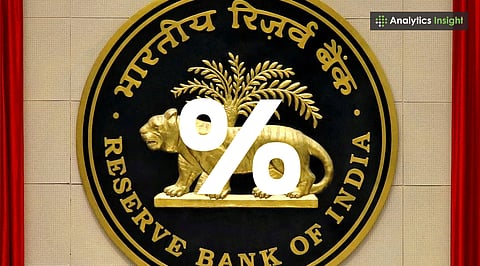

The Reserve Bank of India (RBI) on Wednesday, October 1, decided to keep the repo rate unchanged at 5.5% during its second consecutive pause in a policy meeting. The Monetary Policy Committee (MPC) also kept its policy neutral and indicated a wait-and-watch approach as policymakers interpret the softer inflation with resilient growth.
In addition to the decision to keep rates unchanged, the RBI also lowered its inflation expectation for FY26 to 2.6% from 3.1%. Simultaneously, the central bank raised its FY26 projection for real GDP growth to 6.8% from 6.5%, looking at strong domestic demand, GST reforms, and financial conditions as drivers for growth.
The standing deposit facility (SDF) rate is now unchanged at 5.25%, and the marginal standing facility (MSF) rate and the Bank Rate are also unchanged at 5.75%.
Governor Malhotra emphasized that the growth-inflation dynamics have shifted meaningfully since the August policy meeting. Headline inflation, which was projected at 3.7% in June, eased to 3.1% in August and has now been revised further down to 2.6%.
Core inflation, meanwhile, stood at 4.2%, suggesting underlying price pressures remain under control.
“Rationalisation of GST is expected to have a dampening effect on inflation, while the impact of higher tariffs on exports is likely to be felt gradually,” Malhotra said.
Economists point out that the new forecast puts India’s inflation well within the RBI’s comfort band, creating space for monetary easing in subsequent meetings if growth conditions require.
Also Read: Stock Market Update: Bank Nifty Rises 174 Points, But Remains Below Key Moving Averages
The central bank has revised its outlook for GDP growth from 6.8% to 6.5% for FY26. The upgrade was driven by stronger consumption and investment momentum, with the expectations of positive impacts from fiscal reforms, particularly GST 2.0.
The Reserve Bank of India (RBI) upgraded its expectations for growth in respect of the second quarter of FY26 to 7.0%, up from 6.7%.
The expectations for Q3 and Q4 were slightly moderated to 6.4% and 6.2% down from 6.6% and 6.3%. Looking ahead, Q1 FY27 is forecast in the range of 6.4%-6.6%, reflecting a moderation after the current momentum.
Global consulting firm EY also raised its own forecast for India’s FY26 growth to 6.7% from 6.5%, citing similar drivers of robust domestic demand and monetary stability.
While the RBI kept rates unchanged, analysts see scope for a cut in December if inflation stays below 3% and global risks rise, with the repo rate possibly dropping to 5%. The central bank’s stance reflects a balance between supporting growth and guarding against premature easing, as easing inflation and steady growth give it room for flexibility ahead.
